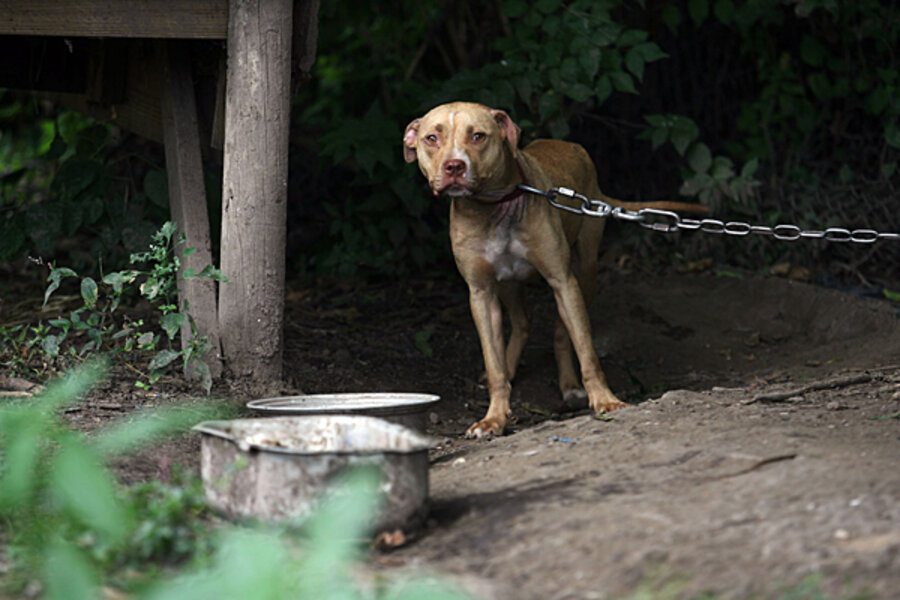Supreme Court rejects animal cruelty law, upholds free speech
Loading...
| Washington
The US Supreme Court on Tuesday struck down a federal law that criminalized photographs and other depictions of animal cruelty, saying the law violated free speech rights protected by the First Amendment.
In an 8 to 1 ruling, the high court said the law was substantially overbroad and thus could not withstand constitutional scrutiny.
The majority opinion, written by Chief Justice John Roberts, criticized the Obama administration for proposing to the high court a balancing test that would pit the “value” of any speech against its “societal costs.”
“As a free-floating test for First Amendment coverage, that sentence is startling and dangerous,” Chief Justice Roberts wrote.
“The First Amendment’s guarantee of free speech does not extend only to categories of speech that survive an ad hoc balancing of relative social cost and benefits,” he said. “The First Amendment itself reflects a judgment by the American people that the benefits of its restrictions on the government outweigh the costs.”
In a lone dissent, Justice Samuel Alito said instead of overturning the entire law the justices should have sent the case back to the lower courts to decide if the statute had been applied in an unconstitutional manner.
At issue in US v. Stevens was whether Congress overstepped its authority when it passed a 1999 law barring the creation, sale, or possession of any depiction of animal cruelty with the intent to distribute and sell it.
The law was initially aimed at blocking a small but growing market in underground sexual fetish videos that involve dominatrix women who step on and kill small animals. By one estimate in 1999 these so-called “crush videos” represented a million-dollar market.
But Congress did not stop there. Lawmakers decided to criminalize a wider range of conduct. The law was written to ban photographs and videos depicting “animal cruelty” in which a living animal is intentionally maimed, mutilated, tortured, wounded, or killed.
The law applied if the underlying conduct violated federal or state law where the “creation, sale, or possession takes place.” Violators would face up to five years in prison.
Roberts said the statute created a criminal prohibition of “alarming breadth.”
“A depiction of entirely lawful conduct runs afoul of the ban if that depiction later finds its way into another state where the same conduct is unlawful,” he said.
He noted that since hunting is illegal in Washington, D.C., the law would extend to “any magazine or video depicting lawful hunting, so long as that depiction is sold within the nation’s capital.”
Roberts rejected pledges by the government that federal prosecutors would only enforce the statute against acts of what it viewed as “extreme cruelty.”
“The First Amendment protects against the government; it does not leave us at the mercy of noblesse oblige,” Roberts wrote. “We would not uphold an unconstitutional statute merely because the government promised to use it reasonably.”
The case before the high court involved a 68-year-old Virginia-based author and documentary producer named Robert Stevens who was convicted of violating the animal cruelty law after selling three videotapes about pit bulls to undercover agents. Mr. Stevens was sentenced to three years in prison. A federal appeals court threw the conviction out after declaring the law unconstitutional.
One of the Stevens films showed pit bulls catching wild boars during hunting trips. Another showed pit bulls engaged in a dog fight in Japan, where such fighting is legal. A third film included vintage dog fight footage shot in the US in the 1960s and 1970s before such fights were outlawed.
Stevens has said he included the dog fight and hunting depictions not to promote dog fighting, but to demonstrate aggressive characteristics that distinguish the pit bull breed from other dogs.
Stevens’ plight has attracted substantial attention among free speech advocates. They argued that the statute sought to declare an entire area of ideas and images off limits to the public. Unpopular, dangerous, and even repulsive speech has value in a free marketplace of ideas, free speech advocates said.
Animal rights activists countered that the law satisfies a compelling government interest in preventing the abuse and torture of animals. Such images of abuse are obscene, they said, and not worthy of First Amendment protection.
The Supreme Court opinion quotes then-President Bill Clinton upon signing the bill into law. Mr. Clinton said the executive branch would interpret the statute as applying only to depictions of “wanton cruelty to animals designed to appeal to a prurient interest in sex.”
In his opinion Roberts added, “No one suggests that the videos in this case fit that description.”
The Supreme Court last declared an entire category of speech unprotected by the First Amendment in 1982 when the justices said child pornography did not deserve constitutional protection.
Other forms of speech declared unprotected by the First Amendment include: fighting words in 1942; threats in 1969; speech inciting illegal activity in 1969; and obscenity in 1973.
Roberts said the high court was declining the government’s invitation to carve out a new First Amendment exception for depictions of animal cruelty.
“Maybe there are some categories of speech that have been historically unprotected, but have not yet been specifically identified,” he wrote. “But if so, there is no evidence that ‘depictions of animal cruelty’ is among them.’ “
The court’s action reverses Stevens’ conviction on different legal grounds than relied upon by the federal appeals court.
Roberts said the high court was not deciding whether a statute limited to so-called crush videos or other depictions of “extreme animal cruelty” would be constitutional.
In his dissent, Justice Alito, a former federal prosecutor, said the law could be applied to “at least two broad real-world categories of expression covered by the statute: crush videos and dogfighting videos.”
He noted: “The harm caused by the underlying criminal acts greatly outweighs any trifling value that the depictions might be thought to possess.”





